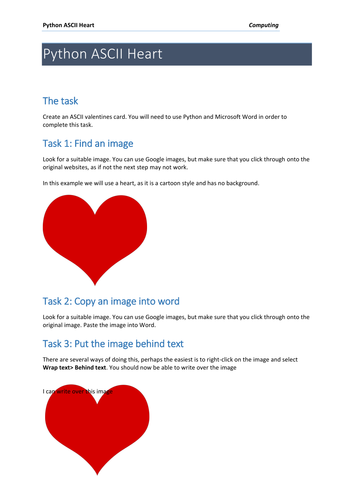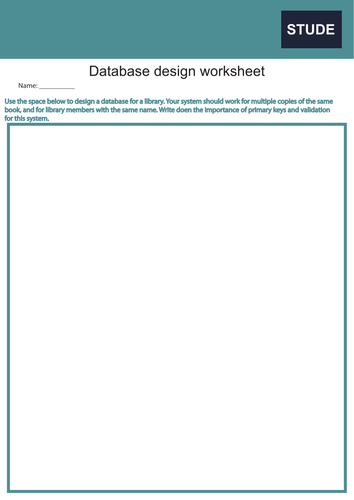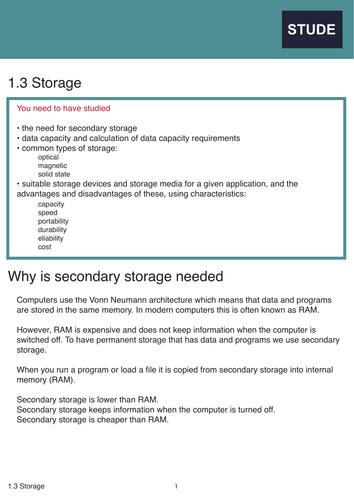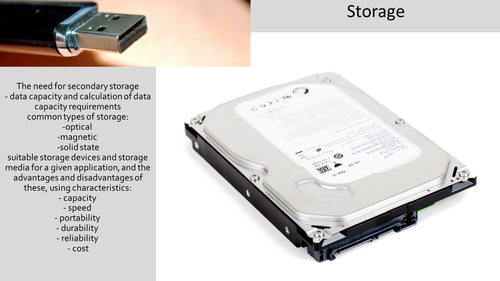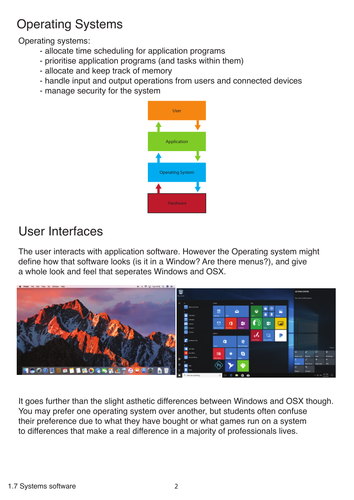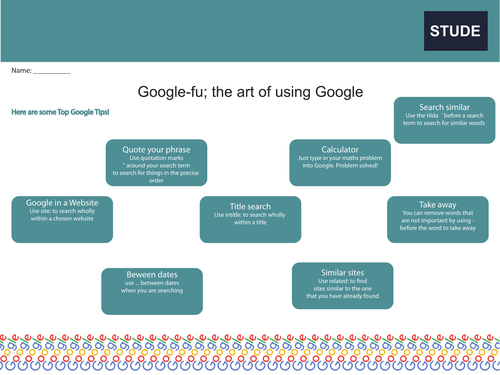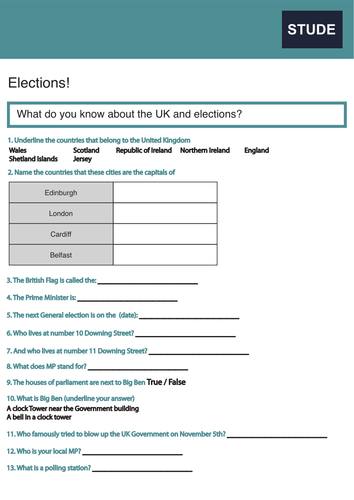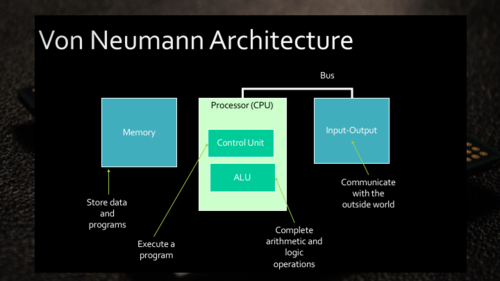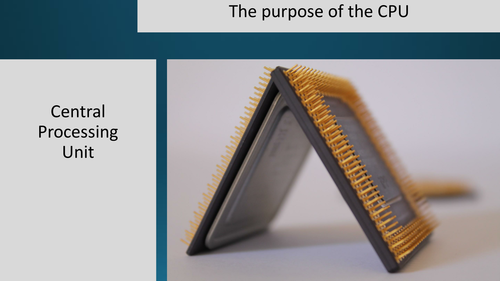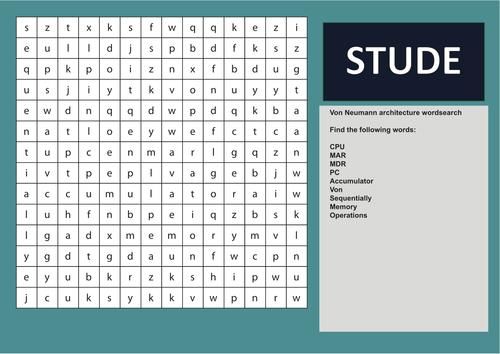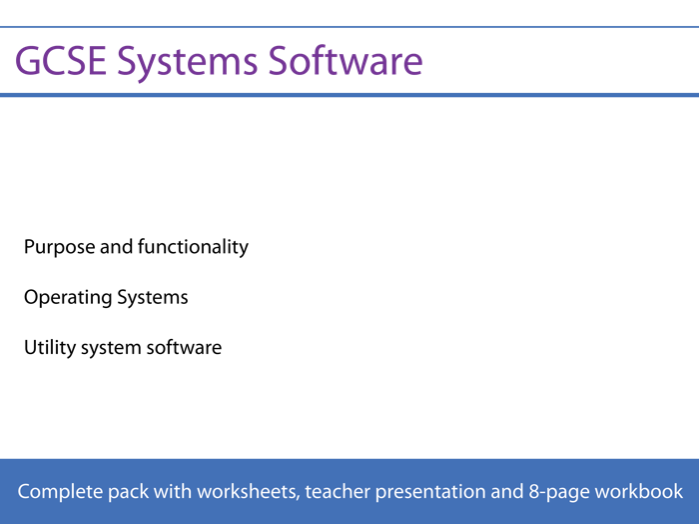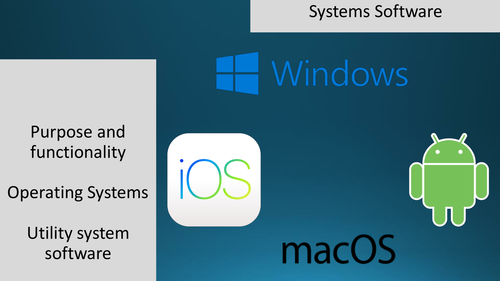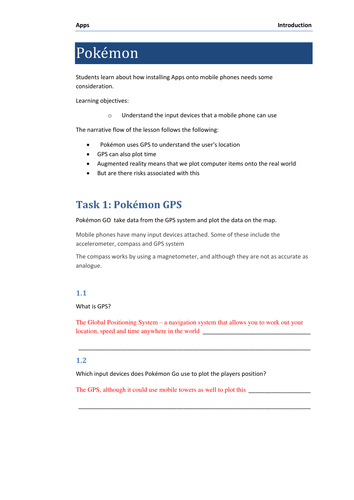
546Uploads
227k+Views
80k+Downloads
Computing

Python Valentines day ASCII heart (art)
No presentation here, just give the students the materials and let them go to create their own valentines themed ASCII art.

GCSE Computer Science 9-1 – Testing and Pseudocode revision
For the AQA GCSE 9-1 Specification, and also suitable for OCR J276.
Contains a series of tasks for revision focusing on testing and pseudocode for students to use in preparation for their exams.

GCSE Computer Science 9-1 – Databases revision
For the AQA GCSE 9-1 Specification, and also suitable for OCR J276.
Contains a series of tasks for revision around database design and keywords revision for students to use in preparation for their exams

OCR - (9-1) Computer Science GCSE - Legislation - Law
A 30 slide presentation covering everything needed to know about the -
Data protection act
Computer Misuse act
Freedom of Information act
Copyright, Designs and Patents Act
Creative Commons

Storage Revision Pack for OCR Computer Science
Complete revision pack for Storage. Designed for OCR Computer Science (9-1) J276 but is more than useful for Computer Science students studying AQA and other exam boards.
Contains a revision booklet for the students, and a data units worksheet.
Contains everything the students need to know:
- the need for secondary storage
- data capacity and calculation of data capacity requirements
common types of storage:
-optical
-magnetic
-solid state
suitable storage devices and storage media for a given application, and the advantages and disadvantages of these, using characteristics:
- capacity
- speed
- portability
- durability
- reliability
- cost

Storage Lesson for OCR Computer Science
Complete lesson for Storage. Designed for OCR Computer Science (9-1) J276 but is more than useful for Computer Science students studying AQA and other exam boards.
Contains a PowerPoint presentation, and two worksheets.
Contains everything the students need to know:
- the need for secondary storage
- data capacity and calculation of data capacity requirements
common types of storage:
-optical
-magnetic
-solid state
suitable storage devices and storage media for a given application, and the advantages and disadvantages of these, using characteristics:
- capacity
- speed
- portability
- durability
- reliability
- cost

Systems Software Revision Pack for OCR Computer Science
Complete revision pack for Systems Software. Designed for OCR Computer Science (9-1) J276 but is more than useful for Computer Science students studying AQA and other exam boards.
Contains a revision booklet for the students, and a data units worksheet.
Contains everything the students need to know:
the purpose and functionality of systems software
- operating systems:
- user interface
- memory management / multitasking
- peripheral management and drivers
- user management
- file management
- utility system software:
- encryption software
- defragmentation
- data compression
- the role and methods of backup (full and incremental)
Bundle

General Election 2017 pack
A great bundle of resources based on the 2017 General Election.
Contains a web quest, worksheets and a presentation.

Google webquest
A web quest that can be used as a self-directed activity for students to help their proficiency in using Google.

General Election 2017 and Government Webquest
British Prime Minister Theresa May called a General Election for 8th June 2017.
This web quest, suitable for KS2 and KS3 is a great way to have a discussion, or for you to use up those few extra minutes in a computer room.

Von Neumann
Lesson presentation for the Vonn Neumann architecture. Designed for OCR Computer Science (9-1) J276 but is more than useful for Computer Science students studying AQA and other exam boards.
Contains the PowerPoint presentation (complete with diagrams)
Contains everything the students need to know:
Basics of the Von Neumann architecture.
MAR (Memory Address Register)
MDR (Memory Data Register)
Program Counter
Accumulator

The purpose of the CPU Lesson GCSE Computer Science for OCR
Complete lesson for the purpose of the CPU. Designed for OCR Computer Science (9-1) J276 but is more than useful for Computer Science students studying AQA and other exam boards.
Contains a PowerPoint presentation, and three basic worksheets.
Contains everything the students need to know:

The Purpose of the CPU Revision Pack for OCR Computer Science
Revision pack for the purpose of a CPU. Designed for OCR Computer Science (9-1) J276 but is more than useful for Computer Science students studying AQA and other exam boards.
Contains a revision booklet for the students, and a questioning activity

The purpose of the CPU Wordsearch GCSE Computer Science for OCR
Purpose of a CPU wordsearch for GCSE computer science

Systems Software Lesson for AQA Computer Science
Designed for AQA Computer Science (9-1) 8520 but is more than useful for other Computer Science students.
Contains a PowerPoint presentation, and three worksheets to help you deliver the content in the specification.
Specification reference 3.4.3: Software classification
Understand the need for, and functions of, operating systems (OS) and utility programs.
Understand that the OS handles management of the:
• processor(s)
• memory
• I/O devices
• applications
• security

4.4 Software for Pearson Edexcel GCSE in Computer Science
Designed for Pearson Edexcel Level 1/Level 2 GCSE (9-1) in Computer Science (1CP1)
Covers 4.4.1 and 4.4.2

Visual Basic (VB) using PowerPoint for KS3 Computing
A project for Microsoft PowerPoint that teaches Visual Basic by allowing students to create an interactive quiz.
A great hit with students and teachers alike!
Full project including assessed homework, assessment sheet and full guide.

Pokémon GO Mobile input devices Computing lesson for KS3
Students learn about how installing Apps onto mobile phones needs some consideration.
Learning objectives:
o Understand the input devices that a mobile phone can use
The narrative flow of the lesson follows the following:
• Pokémon uses GPS to understand the user's location
• GPS can also plot time
• Augmented reality means that we plot computer items onto the real world
• But are there risks associated with this

